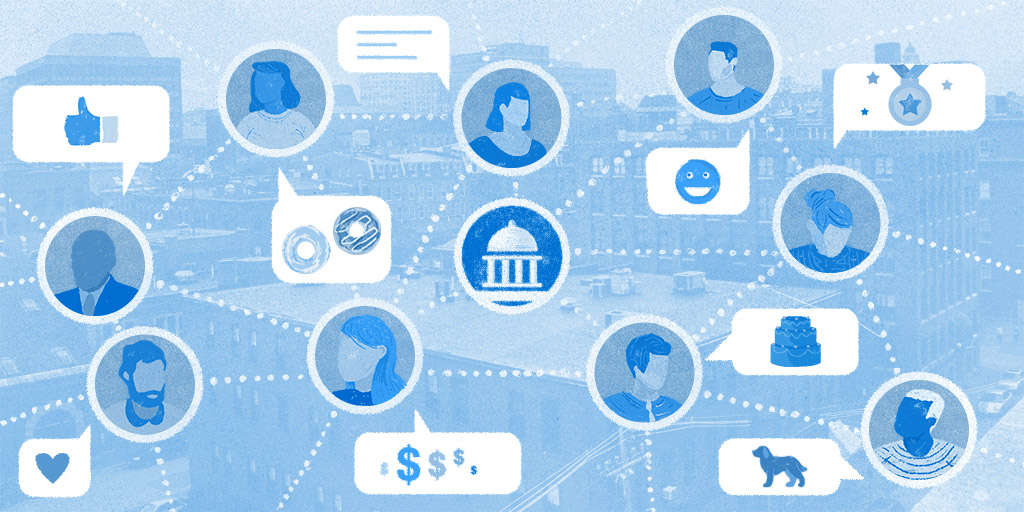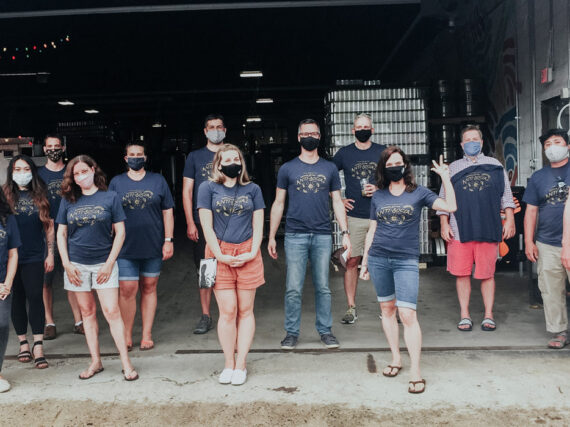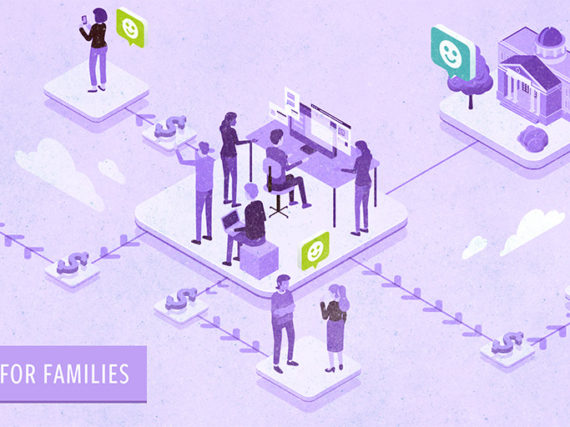As vendors, our clients pay us for a service and we provide it. Does it matter what our work environment is like, and whether we enjoy showing up at the office each day? The same goes for government. Citizens pay for the public sector to do certain jobs, does it matter if government workers are fulfilled by their work?
I spent the past 10 years in the government sector, where formal and structured work environments are often the norm. While the highly organized processes are necessary for consistent delivery of public services, it doesn’t always make these offices a fun place to be.
My transition from the public to the private sector has been liberating. “Really, I can make my own decisions about the best way to accomplish a project? I don’t need to get constant approval from above?” I can feel true passion, engagement, and ownership over my accomplishments.
The dramatic shift I’ve experienced between the public and private sector made me want to write this post. The differences in industry, company culture, and types of personalities and professionals have given me a new perspective on what makes an enjoyable workplace. This lead to thoughts on how we can encourage the public sector to adopt the elements that make private sector workplaces enjoyable.
Why does it matter?
First, to answer the question in the opening, why does workplace satisfaction matter? Because enjoyment at work fuels our intrinsic motivation to perform at our best. As many psychologists have noted, humor can benefit a group by easing tension, promoting positive communication, and fostering social cohesion and creativity.
On the other hand, a draconian workspace suffocates subconscious creativity, erodes social cohesion and clear communication, and by extension limits some of our best work. This is especially so in the highly creative and technical sector of software development.
Steve Jobs aptly said, “Your work is going to fill a large part of your life, and the only way to be truly satisfied is to do what you believe is great work. And the only way to do great work is to love what you do.”
Formal and structured group settings do not always provide the best environment for the free flow of game changing ideas and innovation. They can also stifle progress and problem solving.
I believe that a company where an individual is empowered to produce their highest quality work and where their contribution is valued will outperform a company that neglects employees and their work environment. This is truer today in our knowledge-based, culturally-diverse, and collaborative economy than ever before.
Essentially, happier employees are more productive employees. Thus, if you are going to pay for professional services, whether it be advice, technical skills, or software development, spending a little extra time to find a company with a happy workplace is well worth the effort. The same standards should apply to our government.
What’s the secret sauce?
At GovWebworks, the people in our office play a vital role in making the office a place we want to be. We are lucky to have a highly experienced and continually trained core team who enjoy what they do, and the people they work with. This translates into less staff turnover and a smoother operation. Like a good marinade, the flavors get better over time. Professionals hone their skills, groups become more cohesive and more productive at working together. Projects get completed faster with less complications. Relationships with clients become long-term partnerships and friendships.
For me, the positive atmosphere at GovWebworks boils down to the following two key elements:
- A strong company mission and culture: This creates vision and meaning for workers around the work they do, resulting in a higher quality work product.
- Good social cohesion: This leads to clearer communication, with projects being completed more efficiently, without additional headaches.
The result is a smoother partnership between vendor/customer with clearer communication. Issues are less likely to result in legal action or a deterioration in the relationship. Generally, more value is delivered without additional cost.
The public sector can emulate this by creating a culture that values employee input and facilitates social cohesion.
Some specific examples
In the age of automation and global migration, there is a growing emphasis on company culture and the value delivered to employees. This makes sense. Often the largest investment a company makes is in their staff. Staff retention and happiness matter to the bottom line as much as on a personal level. There is a renewed focus on the quality of the workplace environment, work-life balance, social cohesion, and communication between staff and clients. Companies regularly promote what they stand for via their mission statements, values, and compassion for social causes.
GovWebworks is no different, and has its own unique culture that in turn generates the environment that makes the office an enjoyable place to work. These are the elements I most enjoy:
1) Supportive and flexible management style
- Opportunities for both personal and professional growth
- Work life balance and understanding of family issues
- Flexible schedule
- Dog friendly office
2) Ample, regular food and entertainment
- Summer picnic/outing
- Holiday party
- Team building events
- Reward lunches for logging time
- Monday morning donuts
- Mid-week yoga
- End of week “Beer-o’clock” debrief
3) Democratic and transparent environment
- Monthly staff meetings
- Daily standup meetings
- Transparent financial reports
- On-going project and progress status reports
- Level playing field – no hierarchy
- Everyone’s opinions are valued
In conclusion
There are many tricks to fostering a more positive work environment and sustaining happy employees, but establishing a truly harmonious workplace ultimately comes from the culture at the top. If the people leading are leading by example, the results will show it.
As Richard Branson famously said, “Clients do not come first. Employees come first. If you take care of your employees, they will take care of the clients.”
Creating an environment where employees actually want to be is crucial to staff retention and inter-office communication, and this minimizes potentially devastating issues. When a sense of trust is built within a company, both the morale and the quality of the work product increases.
As a result, clients receive more value, in less time, with reduced risk of project failure. As well, client relationships are usually better. Challenging situations are met with more innovative solutions and a positive attitude. This is good news for both our clients and for our staff.
The public sector can also achieve similar results by putting employees first. Just as our clients are rewarded by happy employees, so too, can citizens be rewarded by happy public servants.
Learn more
- The Benefits of Happy Workplaces in the Public Sector – The Happy Manifesto
“The Whitehall Study, which is the largest longitudinal study of people in the workplace ever conducted, found connections between better wellbeing and positive outcomes and also direct causes. It investigated more than 10,000 UK civil servants since 1985 and a key finding was that how much control you have and the opportunity for social participation profoundly affects the health of individuals. The conclusion was that there is an intrinsic need for autonomy and social engagement (Marmot, 2008).” - The Pursuit Of Happiness In The Workplace – Forbes
“On average, we spend 90,000 hours at work during our lifetime. So doesn’t it serve us to be proactive in making our happiness there a priority ?Studies show that happy people are less stressed, get promoted more frequently, and are more creative, productive and healthy, just to name a few benefits.” - What creates workplace engagement? Nine tips to build a happy and productive workforce – The Happiness Index
“Happy employees are 12 percent more productive than the norm, and 22 percent more productive than their unhappy peers. Creating a pleasant workplace full of happy people contributes directly to the bottom line.”







